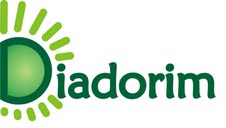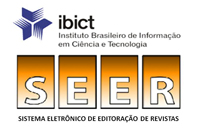CORRELAÇÃO ENTRE CRITÉRIOS ULTRASSONOGRÁFICO ACR TI-RADS E CITOPATOLÓGICO BETHESDA NA AVALIAÇÃO DE NÓDULOS TIREOIDIANOS
Resumo
INTRODUÇÃO: Nódulos tireoidianos são bastante comuns na população, entretanto, distinguir os nódulos tireoidianos malignos dos benignos constitui um desafio. A ultrassonografia (US) é uma ferramenta fundamental no diagnóstico do câncer de tireoide. Em 2017, o Colégio Americano de Radiologia divulgou suas recomendações para análise da US de tireoide, estabelecendo o ACR TI-RADS, na tentativa de padronizar as indicações para punção aspirativa por agulha fina (PAAF) entre endocrinologistas e radiologistas. A classificação de Bethesda obtida pela PAAF por vez fornece subsídio para prosseguimento com cirurgia. A indicação de PAAF e a categorização do nódulo baseada em características ultrassonográficas, no entanto, permanecem controversas. OBJETIVOS: Determinar a correlação entre achados à US de tireoide e à PAAF utilizando os critérios ACR TI-RADS e Bethesda nos pacientes acompanhados no HU-UFPI no período de janeiro a junho de 2017. METODOLOGIA: Estudo observacional e transversal. As variáveis consideradas foram sexo, idade, tamanho do nódulo, ACR TI-RADS e Bethesda. Para análise dos dados foram obtidas médias, porcentagens, e utilizados os testes Qui-quadrado, T-Student e Kappa. RESULTADOS: Foram avaliados 151 pacientes, sendo 94,7% do sexo feminino. O tamanho médio do nódulo foi de 2,1cm e a média de idade de 53,2 anos. Entre as variáveis, o tamanho do nódulo foi o que mais se associou com a classificação Bethesda. Houve associação positiva entre os métodos ACR TI-RADS e Bethesda. CONCLUSÃO: Houve correlação entre o método ultrassonográfico ACR TI-RADS e o método citopatológico Bethesda, entretanto, mais estudos são necessários para precisar a confiabilidade do método ultrassonográfico.
Palavras-chave
Texto completo:
PDFReferências
Smith-Bindman R, Lebda P, Feldstein VA, Sellami D, Goldstein RB, Brasic N, et al. Risk of thyroid câncer based on thyroid ultrasound imaging characteristics: results of a population-based study. JAMA Intern Med. 2013;173:1788-96.
Guth S, Theune U, Aberle J, Galach A, Bamberger CM. Very high prevalence of thyroid nodules detected by high frequency (13 MHz) ultrasound examination. Eur J Clin Invest. 2009;39:699-706.
Dean DS, Gharib H. Epidemiology of thyroid nodules. Best Pract Res Clin Endocrinol Metab. 2008;22(6):901-11.
Haugen BR, Alexander EK, Bible KC, Doherty GM, Mandel SJ, Nikiforov YE, et al. 2015 American Thyroid Association management guidelines for adult patients with thyroid nodules and differentiated thyroid cancer: the American Thyroid Association Guidelines Task Force on Thyroid Nodules and Differentiated Thyroid Cancer. Thyroid. 2016;26:1-133.
Horvath E, Majlis S, Rossi R, Franco C, Niedmann JP, Castro A, et al. An ultrasonogram reporting system for thyroid nodules stratifying cancer risk for clinical management. J Clin Endocrinol Metab. 2009;94:1748-51.
Grant EG, Tessler FN, Hoang JK, Langer JE, Beland MD, Berland LL, et al. Thyroid ultrasound reporting lexicon: white paper of the ACR Thyroid Imaging, Reporting and Data System (TIRADS) Committee. J Am Coll Radiol. 2015;12:1272-9.
Tessler FN, Middleton WD, Grant EG, Hoang JK, Berlang LL, Teefey AS, et al. ACR thyroid imaging, reporting and data system (TI-RADS): white paper of the ACR TI-RADS committee. J Am Coll Radiol. 2017;14(5):587-95.
Singh Ospina N, Brito JP, Maraka S, Ycaza AEE, Rodriguez-Gutierrez R, Gionfriddo MR, et al. Diagnostic accuracy of ultrasound-guided fine needle aspiration biopsy for thyroid malignancy: systematic review and meta-analysis. Endocrine. 2016;53:651-61.
Gamme G, Parrington T, Wiebe E, Ghosh S, Litt B, Williams DC, et al. The utility of thyroid ultrasonography in the management of thyroid nodules. Can J Surg. 2017;60(2):134-9.
Baynes AL, Del Rio A, McLean C, Grodski S, Yeung MJ, Johnson WR, et al. Ann Surg Oncol. 2014;21(5):1653-8.
Cibas ES, Ali SZ. The Bethesda system for reporting thyroid cytopathology. Am J Clin Pathol. 2009;132:658-65.
Armitage P, Berry G, Matthews JNS. Statisticalmethods in medical research. 3nd ed. London (GB): Blackwell Scientific Publications; 2002.
Pestana MH, Gageiro JN. Análise de dados para ciência sociais: a complementaridade do SPSS. 3 ed. Lisboa: Edições Sílabo, 2003.
Hosmer DW, Lemeshow S. Applied Logistic Regression. New York: Wiley, 2000.
Landis JR, Koch GG. The measurement of observer agreement for categorical data. Biometrics. 1977;33:159-74.
Brito JP, Morris JC, Montori VM. Thyroid cancer: zealous imaging has increased detection and treatment of low risk tumours. BMJ. 2013;347:f4706.
Davies L, Welch HG. Current thyroid cancer trends in the United States. JAMA Otolaryngol Head Neck Surg. 2014;140:317-22.
Tufano RP, Noureldine SI, Angelos P. Incidental Thyroid Nodules and Thyroid Cancer Considerations Before Determining Management. JAMA Otolaryngol Head Neck Surg. 2015;141(6):566-72.
Yoon JH, Lee HS, Kim EK, Moon HJ, Kwak JY. Malignancy risk stratification of thyroid nodules: comparison between the Thyroid Imaging Reporting and Data System and the 2014 American Thyroid Association management guidelines. Radiology. 2016;278:917-24.
Singaporewalla RM, Hwee J, Lang TU, Desai V. Clinico-pathological Correlation of Thyroid Nodule Ultrasound and Cytology Using the TIRADS and Bethesda Classifications. World J Surg. 2017;41(7):1807-11.
Rahal A, Falsarella PM, Rocha RD, Lima JPBC, Iani MJ, Vieira FAC, et al. Correlation of Thyroid Imaging Reporting and Data System [TI-RADS] and fine needle aspiration: experience in 1,000 nodules. Einstein. 2016;14(2):119-23.
Middleton WD, Teefey SA, Reading C, Langer JE, Beland MD, Szabunio MM, et al. Multi-institutional analysis of thyroid nodule risk stratification using the American College of Radiology Thyroid Imaging, Reporting and Data System. Am J Roentgenol. 2017;208(6):1331-41.
Moon WJ, Jung SL, Lee JH, Na DG, Baek JH, Lee YH, et al. Benign and malignant thyroid nodules: US differentiation-multicenter retrospective study. Radiology. 2008;247:762-70.
Vargas-Uricoechea H, Meza-Cabrera I, Herrera-Chaparro J. Concordance between the TIRADS ultrasound criteria and the BETHESDA cytology criteria on the nontoxic thyroid nodule. Thyroid Res. 2017;10:1.
Brito JP, Yarur AJ, Prokop LJ, McIver B, Murad MH, Montori VM. Prevalence of thyroid cancer in multinodular goiter versus single nodule: a systematic review and meta-analysis. Thyroid. 2013;23(4):449-55.
Wei X, Li Y, Zhang S, Gao M. Thyroid imaging reporting and data system (TI-RADS) in the diagnostic value of thyroid nodules: a systematic review. Tumor Biol. 2014;35:6769-76.
Instituto Nacional de Câncer José Alencar Gomes da Silva. Coordenação de Prevenção e Vigilância Estimativa 2016: incidência de câncer no Brasil. Rio de Janeiro (RJ); 2015.
Yoon JH, Han K, Kim EK, Moon HJ, Kwak JY. Diagnosis and Management of Small Thyroid Nodules: A Comparative Study with Six Guidelines for Thyroid Nodules. Radiology. 2017;283(2):560-9.
Shin JH, Baek JH, Chung J, Ha EJ, Kim JH, Lee YH, et al. Ultrasonography Diagnosis and Imaging-Based Management of Thyroid Nodules: Revised Korean Society of Thyroid Radiology Consensus Statement and Recommendations. Korean J Radiol. 2016;17:370-95.
DOI: https://doi.org/10.26694/2595-0290.20181218-286978
Apontamentos
- Não há apontamentos.
Indexado em:
Diretórios:







